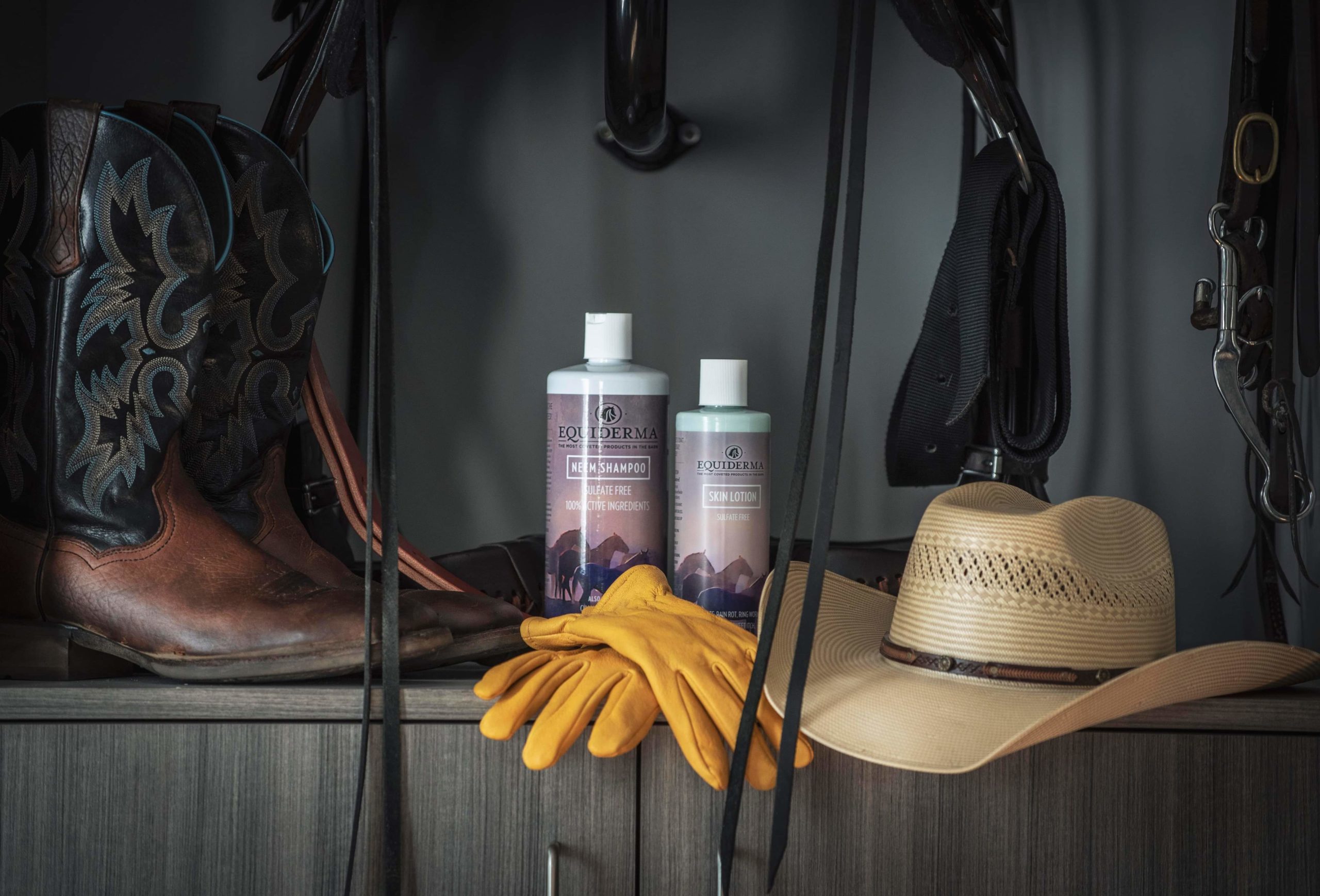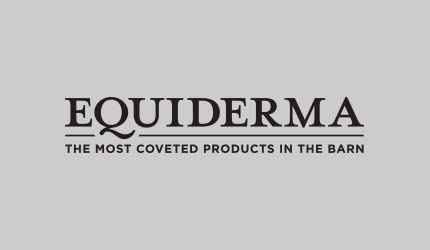- Shop
Collections
Categories
Skin Conditions
- Skin Conditions
- Apparel & Accessories
- Meet the Founder
- Shop
Collections
Categories
Skin Conditions
- Skin Conditions
- Apparel & Accessories
- Meet the Founder

Good grooming and feeding practices are the key to good skin and coat health. Sometimes, this is not enough. Recognizing horse skin issues and knowing what to do when trouble comes calling is an important part of your horse’s care. Here we’ll identify the most common skin issues that plague our horses and what to do about them.
TOP 10 SKIN ISSUES AND HOW TO TREAT
SWEET ITCH
Sweet Itch is an allergic reaction to biting insects. Application of Equiderma Skin Lotion is the core treatment, but to attack the problem from all angles, bathe with Equiderma Neem Shampoo to soothe the skin and calm the itch. Then create a protective barrier with Equiderma Neem Conditioner, apply skin lotion liberally, and repeat as needed. Finish with Equiderma Horse Spray.
RAIN ROT
The more quickly you can detect rain rot, the better. Apply Equiderma Skin Lotion liberally, allow the lotion to soften any scabs gently before attempting to remove them. Continue to apply Skin Lotion as often as needed, at least 2x a day, until you see hair regrowth and healing. During bathing time Equiderma Neem Shampoo will help to soothe the inflammation.
THRUSH
Thrush is a painful infection of the hoof. Apply Equiderma Thrush Treatment after picking the hoof well, use the brush of the hoof pick to scrub into every nook and cranny. Reapply until all signs of thrush are gone.
MANE AND TAIL RUBBING
Many factors can contribute to an itchy tail, from allergic reactions to insect bites, dirty sheaths and udders, tick bites, to pinworms and more. Wash the affected area with Equiderma Sheath, Udder and Genital Cleanser, allow to soak in, rinse, then apply Skin Lotion liberally. Equiderma Horse Spray will deter biting insects in to prevent the issue going forward.
CANNON CRUD
Certain parts of your horse’s body produce excess keratin, but Cannon Crud is most often seen on cannon bones. Apply Equiderma Skin Lotion liberally to manage this irksome issue.
SCRATCHES
Scratches is a frustrating irritation in the hollow of the pastern that can quickly become scabby and scaly. It goes by many names, like mud fever and greasy heel, but its true name is Pastern Dermatitis. If the area presents as dry and scaly, use Equiderma Skin Lotion. If the area is wet and seeping, generously cover with Equiderma Zinc Oxide Paste.
RINGWORM
When you see those telltale hairless patches of skin on your horse, there’s a good chance it’s from the same ringworm fungus that affects humans. If possible, remove hair from around the affected area, cleanse with Equiderma Neem Shampoo, and most importantly, apply Skin Lotion! The treatment process can take weeks, and take care not to allow the fungus to spread amongst other horses or to yourself.
WOUNDS
Consult a veterinarian for severe wounds, but for wounds that you feel comfortable treating at home, gently wash with Equiderma Neem Shampoo and apply Equiderma Wound Ointment generously. Repeat as needed.
WHITELINE
The secret to coping with whiteline disease is killing the fungal spores while encouraging healthy hoof growth. Consult a skilled farrier, and apply Equiderma Thrush and Whiteline Treatment frequently after thoroughly picking the hoof.
MALLENDERS & SALLENDERS
Most prevalent in horses with heavy feather, this condition can cause your horse a lot of discomfort. Soften the waxy buildup by applying Equiderma Skin Lotion. Use Equiderma Neem Shampoo at bathing time, allowing the shampoo to soak in order to soothe the scabs. There is no cure for this condition, but it can be managed easily with frequent applications of skin lotion.
For more helpful tips and videos, check out our Youtube Channel!

It’s possible for your horse to live outside in comfort all year...

Winter Rain Rot brings with it a unique and frustrating challenge for...

Ordinarily in this blog I share ideas for understanding your horse better...